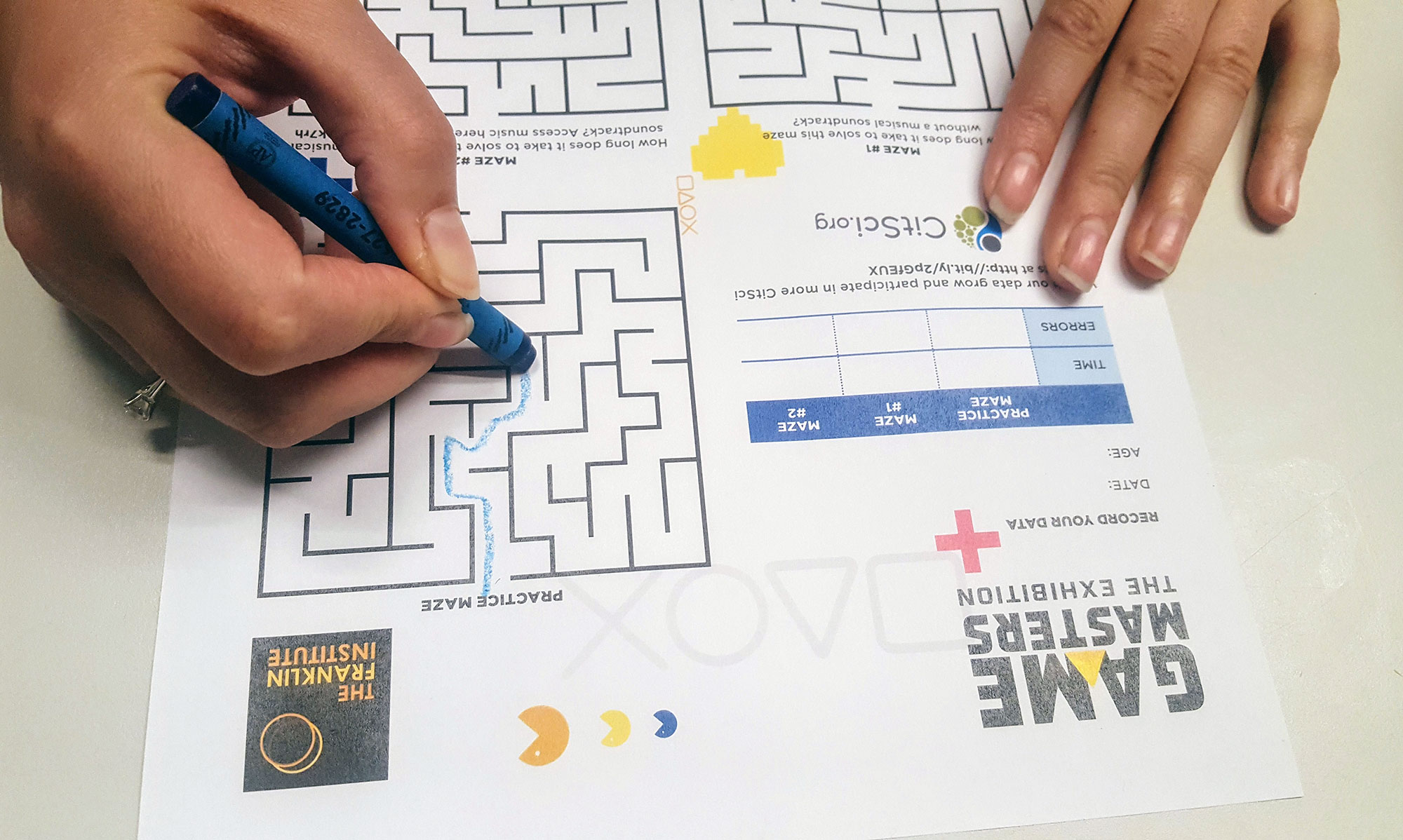
Date:
Game Masters has brought guests of all ages into the museum to play video games, from Pac-Man to Donkey Kong and Fruit Ninja to Rock Band. There are many types of video games on the market today, but I noticed one thing all of them had in common: they all had a soundtrack! Whether I am racing in Sega Rally Championship or controlling a relaxing petal through the winds of Flower, the music always helps to immerse me into the environment of the game. I wondered: why is that? Does the music help my performance or could it distract?
I know that these questions do not have to go unanswered. Using the scientific method, we can come up with our own results. The first step is making an observation. I observed that my favorite video games all have background music. The second step of the scientific method to formulate a question. The question will help us focus our research to learn about prior findings and details about video games and the psychology of music as well as pinpoint what information we would like to uncover. During my research, I found that there is a whole sector of study called Ludomusicology, which is the study of video game music. ("Ludology" is the study of games and gameplay, and "musicology" is the psychology of music.) This has been an area of scientific study since the 1990’s, and since then the data set has grown substantially.
Research on many driving-based games showed that the more beats per minute are in the game's music, the faster a player will drive -- but they also make more mistakes. Our ‘driving’ question is “Will background music affect the speed and accuracy of a player solving a maze?” Once my question was established, I needed to come up with a hypothesis (educated guess) based on prior knowledge and past observations. My hypothesis is that the presence of music will increase the speed of the solution, but that a greater number of mistakes will be made during the solving process.
This experiment is where our museum guests come in! We used a maze generator to create two mazes with similar difficulty levels. The guests will solve one maze in silence, while the second maze will be solved with music playing in the background. Inspired by previous studies that have been conducted on racing games, I chose the soundtrack to my favorite level of Mario Kart 64: Moo Moo Farms [editor's note: the aforementioned game is not featured in the Game Masters exhibition].
Would you like to participate in our citizen science study? Download a PDF of the maze to try the project at home! Enter your data at bit.ly/citscidata. To see real-time data in chart form, click here.


